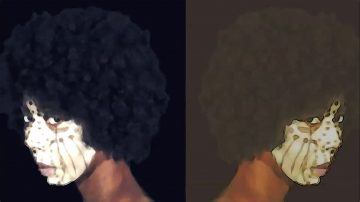by Joan Harvey
I learned in New Jersey that to be a Negro meant, precisely, that one was never looked at but was simply at the mercy of the reflexes the color of one’s skin caused in other people. —James Baldwin, Notes of a Native Son
I am invisible, understand, simply because people refuse to see me. —Ralph Ellison, Invisible Man
…American society is blind to hundreds, even thousands of murders perpetrated in its name by agents of governments. — John Lewis

I had begun thinking about how the coronavirus made very visible the shambles of our society, when the murder of George Floyd took place. Disasters pull aside the veil, and make an underlying reality more apparent. Already the coronavirus had exposed the reality of racism, capitalist economics, the weakness of our food system, our health care crisis, the extreme vulnerability of so many populations, and the built-in structural violence. The George Floyd murder, and the subsequent protests and riots, were police brutality made visible, and rage against the brutality made visible.
Activist and epidemiologist Gregg Gonsalves, referring to the way the virus has been mishandled, asks:
How many people will die this summer, before Election Day? What proportion of the deaths will be among African-Americans, Latinos, other people of color? This is getting awfully close to genocide by default. What else do you call mass death by public policy?
His comments apply equally to the public policy that allows so many to be killed by police. Writing in 2014, civil rights leader John Lewis mentions a recent study that reported that “one black man is killed by police or vigilantes in our country every 28 hours, almost one a day.” Read more »
